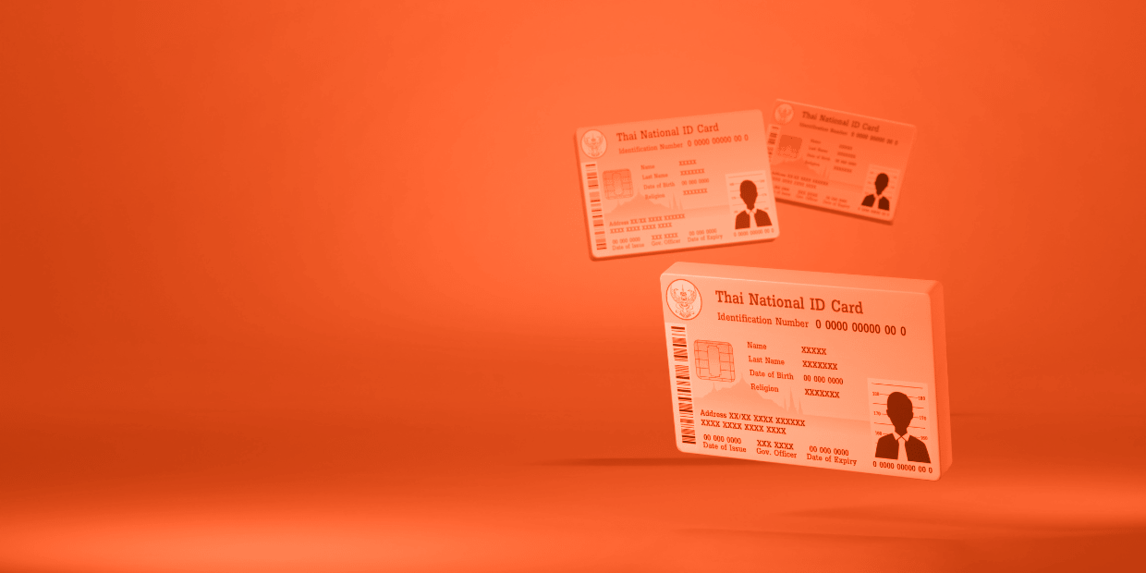
Five Motives for Using a Counterfeit ID
Many solution providers and government agencies tout the rise of identity fraud.
During the pandemic, unemployment insurance and PPP fraud was rampant.
The identity fraud problem garnered the attention of the U.S. Senate and House of Representatives. A bill called “Improving Digital Identity Act of 2023” is making its way through the legislative process.
Congressional findings state 293 million people were impacted by data breaches in 2021. Since 2017, losses resulting from identity fraud increased by 333 percent. In 2020, losses totaled $56 billion.
The negative outcomes of our fragmented and outdated identity infrastructure are clear.
But what drives a person to present a counterfeit or fake ID?
Is it always for illicit financial gain?
This article focuses on the WHY.
#1- No ID
Sometimes, people don’t have a government ID.
The ACLU states that 11% of U.S. citizens – or more than 21 million Americans – do not have government-issued photo identification.
People with limited financial resources, disabilities, or inadequate transportation often lack physical ID.
As a result, these individuals may present a fake or forged ID to complete an online transaction. This motive is because they have no other means to prove who they say they are.
#2 – Underage
Movies like Breakfast Club, Vegas Vacation, or Superbad parody teenagers using fake IDs to buy alcohol or to go to bars and clubs.
My favorite is the McLovin ID in Superbad. Classic!
As age-restricted commerce moves online and alcohol or cannabis delivery become common use cases, underage fake ID usage has followed.
Do a Google search of “buy fake ids” you will find services like TopFakeId or IDGod that will sell quality counterfeit IDs for “novelty” purposes.
Sometimes, these services have a “code of conduct” where they will only sell them for purposes of bypassing age restriction laws.
Often, there are no restrictions.
#3- Incorrect/expired ID
Most government-issued IDs come with an expiration date. After a set period of time, the document is no longer valid and needs to be renewed.
Or, the address printed on the document is no longer correct as the document holder has since moved.
Many digital identity verifications or KYC checks require a valid, unexpired document.
This becomes problematic for document holders who may not have the means to update their documents.
It could require taking time off work and visiting a DMV or filling out paperwork and paying fees.
And if the product or service they are trying to obtain is urgent, they might need to resort to tampering or forging the document.
Altering a document expiry date or changing an address are common, benign attempts to get through document-based identity checks.
The person is truly who they claim to be but they might get rejected for the document being invalid or the address not matching their current mailing address.
#4 – Impersonation
When people hear about identity fraud they often think of identity theft.
Unauthorized impersonation to open an account, obtain credit, or file a tax return in the name of another person is called third-party fraud.
A fraudster leverages basic personal information augmented with socially engineered or breached data to perpetrate the fraud.
If requested to present a government-issued ID, the fraudster may manipulate the name, address, and portrait on the document to complete their scheme.
Efforts may vary from Photoshop photo swaps to text edits all the way to a fully counterfeit physical specimen but the intent is the same…
Using someone else’s good name (or credit history) to profit.
#5 – Synthetic Identity
The last motive is the most sophisticated and the most dangerous. A fraudster, or an organized fraud ring, leverages counterfeit IDs to commit financial crime at scale.
The Federal Reserve defines synthetic identity fraud (SIF) as:
The use of a combination of personally identifiable information (PII) to fabricate a person or entity in order to commit a dishonest act for personal or financial gain
Synthetic identities are notoriously difficult to detect as they look like real people but there is no “victim” to complain about a stolen identity. They have bank accounts, credit cards, car loans, and often really good credit scores.
Another famous movie, The Shawshank Redemption, demonstrated the power of a synthetic identity.
The protagonist Andy Dufresne, falsely imprisoned for the murder of his wife, used a made up entity named “Randall Stephens” to launder money for the corrupt prison warden.
“He’s a phantom, an apparition, second cousin to Harvey the rabbit. I conjured him out of thin air. He doesn’t exist, except on paper.”
That’s exactly what synthetic identity fraudsters do. They create financial phantoms.
And when they are presented with an ID document check, they use sophisticated technology or counterfeit IDs to bypass it.
Near-perfect physical IDs. Deep fakes. Emulated camera injections. Or even presenting their own face to a biometric liveness and verification.
Sometimes decent people use synthetic identities to get a fresh start from a bad credit history, also known as a “credit wash” but most of the time synthetic identities are used to launder money, fund organized crime, fuel terrorism, or facilitate human trafficking.
These are the worst, most nefarious motives of all.
Next Steps
Now that you understand the WHY behind counterfeit IDs, are you interested in how to spot them and stop them?
Learn how to detect them in an upcoming free webinar where we provide valuable insights and strategies to help you stay ahead of the latest fraud trends.
Register here: https://www.about-fraud.com/webinars/how-to-detect-counterfeit-ids/
| Tagged with: |
| Posted in: | AF Education |
